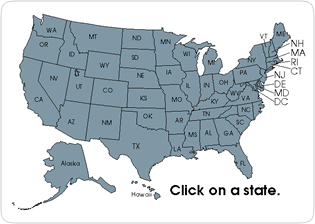From wooden casks to stainless steel and aluminum, from spile and shive to Sanke tap, the evolution of the beer keg has also influenced the evolution of beer. Driven by the mass production demanded by beer fans the world over, brewers have tinkered with and improved the beer keg in many ways during its evolution. Some of these changes have also impacted the quality of beer and even the brewing process. Though the old style cask ales, or “real ales” are still in production in some parts of England and the U.S., modern beer is dominated, even in the microbrew and craft beer markets, by pasteurized and filtered beers. Here we will look at the evolution of the beer keg and the effect mass production has had on the beer it has kegged.
 |
History shows us that the drinking of beer goes back at least 4,000 years. In that time, beer was most likely stored in clay urns and pots. But somewhere along the line, humans discovered that beer could be carbonated by sealing it in a bottle or cask and letting the yeasty “spirits” or “miracles” of fermentation go about their business. With this discovery came the first beer keg.
As far as historical records go, we can see a lot of light shed on the development of beer in Europe. Originally, European beer, i.e., beer-as-we-know-it-now, was predominantly kegged in wooden casks. These casks were usually made of oak or other hardwoods that had a reputation for being non-toxic. Beer at this time was un-pasteurized and usually unfiltered, which lent it to spoiling. This beer had an expiration date!
Most of the advances in brewing and kegging technology since then have focused on increasing the life span of beer. The most important of these was the process of pasteurization. Pasteurization is a process by which a product in a bottle or can is rapidly heated and then cooled. This process ensures that any organism that may be purposely or un-purposely left in the product (in this case, the beer keg) is killed. Through the use of pasteurization, beer kegs have been granted a much longer shelf life.
For some, the change in taste that the pasteurization process yields is too much to ask for the benefits of increased shelf life. An organization known as CAMRA, the CAMpaign for Real Ale, has taken up the cause of un-pasteurized and un-filtered beer. Through this group, folks interested in cask ales and real ales may find them in the U.K. Interest in cask ales is present in the U.S. as well, although the term real ale does not have the same weight as in the U.K., where strict guidelines have been established. Real ales are those ales that are still “alive” with living yeast. Cask ales are ales that are served from a cask, although not necessarily a traditional wooden one. These ales may be filtered, but they are usually cask-conditioned. This means that they gain their fizzy carbonation through the natural process of fermentation instead o the “force-carbonating” that is usually done by commercial beer makers.
The modern Sanke beer keg is designed to be rugged, easily cleaned (at least with the right industrial keg cleaning machines, and to hold a great amount of beer while still being light enough to be handled by one person. Unlike the cask, the progenitor of the keg, the Sanke keg requires little preparation and knowledge to operate. Sanke kegs took the Shive hole and the keystone of casks and put them into the same hole, locked in with a coil spring and valve, released with the push of the tap once attached.
Today, most cask ales are served from steel or aluminum casks, just as regular beer kegs are. They still require the care of an attentive landlord or barkeep, however. The gas must be vented and the beer prepared two to three days ahead of time. The benefit of a little extra tooling and care produces the result of an ale the likes of which might have been enjoyed 2,000 years ago! For all the modern influence of technology on brewing, it is refreshing to see that some people still like to do things the old fashioned way.
See related keg beer articles: History of the Kegerator, Beer Keg Directory, Beer Kegging Tutorial

.gif) I just noticed Micro Matic has thrown out a sale on their Tap & Serve Kegerator for $445.50. If you ever were looking for a good deal on a kegerator, here is a great deal for you. This unit is slim and won’t take up a lot of space. It packs all the features of most of the expensive kegerators and has a stainless steel finish which is nice for fitting in with most of today’s kitchen decor.
I just noticed Micro Matic has thrown out a sale on their Tap & Serve Kegerator for $445.50. If you ever were looking for a good deal on a kegerator, here is a great deal for you. This unit is slim and won’t take up a lot of space. It packs all the features of most of the expensive kegerators and has a stainless steel finish which is nice for fitting in with most of today’s kitchen decor.

